Kerfing Saw
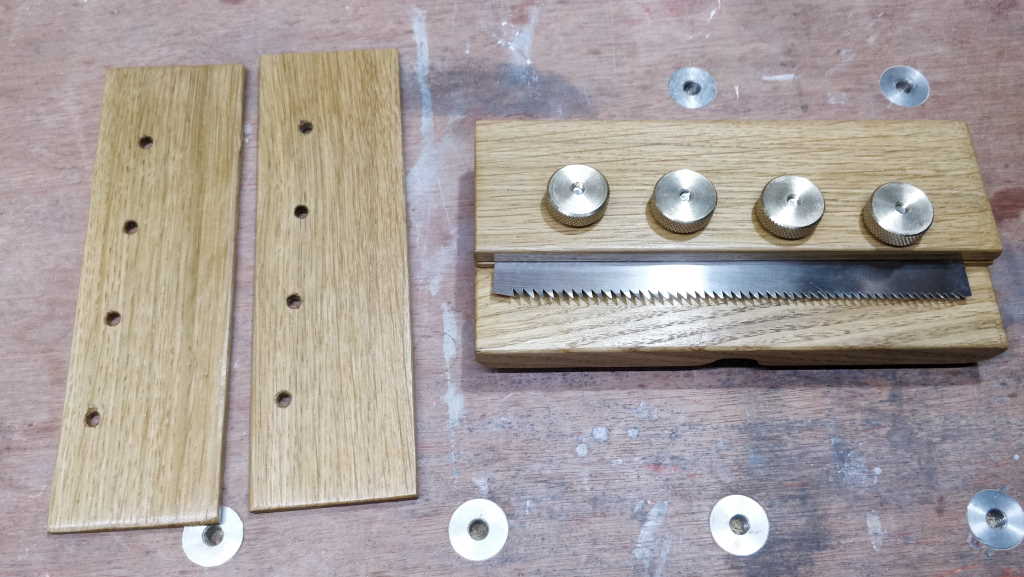
I had a couple of thin pieces of cherry that I wanted to rip in half so I made a tool to help me rip them accurately.
I guess you'd call it a kerfing saw or something like that. It's made out of oak, about 200 mm long and about 90 mm high; the spacers and clamp pieces are 60 mm high. I've made spacers in a few different thicknesses; I'll probably make some more in due course - they're very easy to make. The 8 mm one has more dramatically rounded edges than the others as I'll generally use that as the outer clamp piece when using thinner spacers and it makes it more comfortable in the hand having rounded edges.
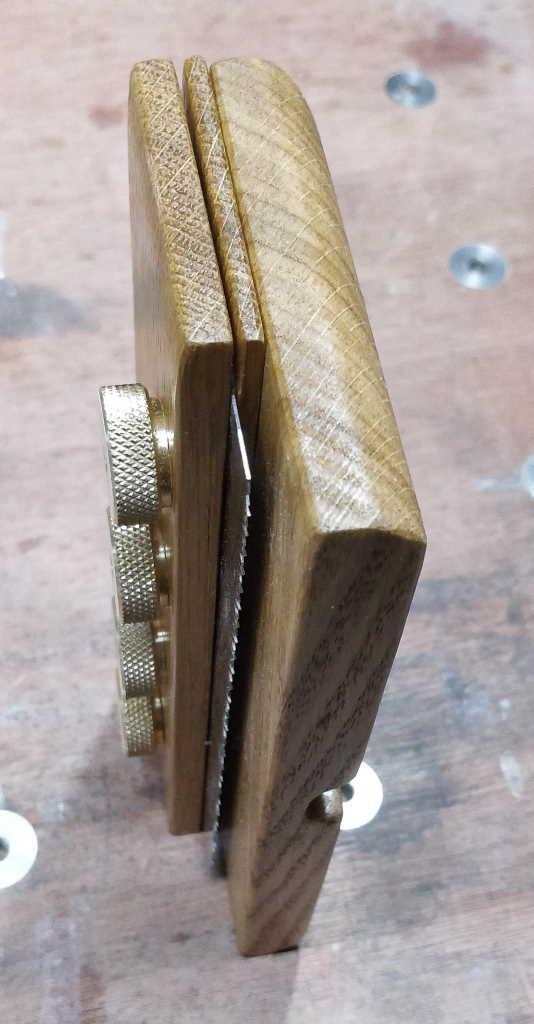
The idea is that you fit a spacer about 1 mm thicker than the thickness of wood you want and then press the fence against the side of the wood while taking cuts all the way round the edge of the board. You then get a saw out and it's fairly easy to follow the pre-cut kerf.
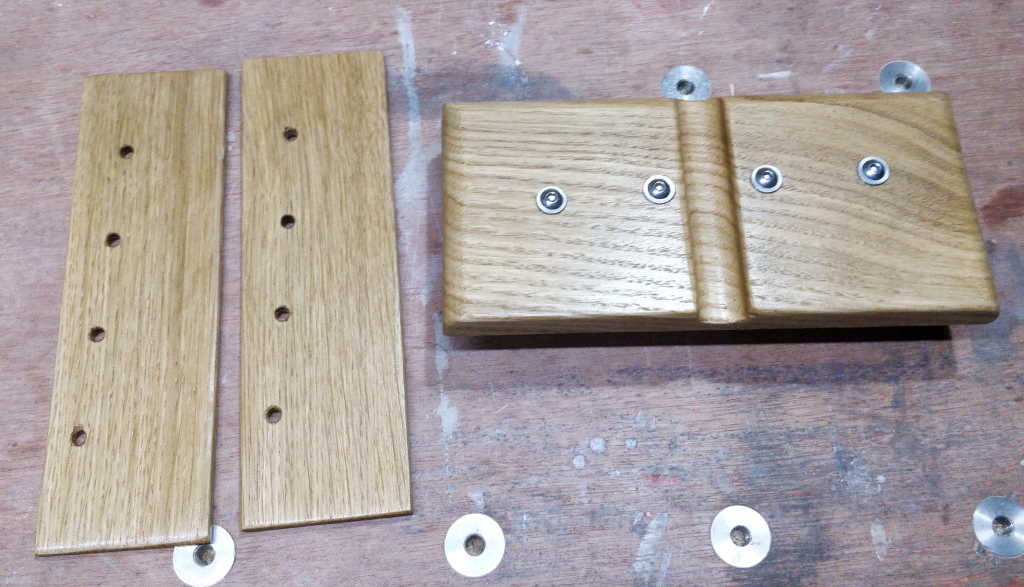
The flange-button head M5 screws you can see in this picture are held in place with 5-minute epoxy, so dismantling just involves the knurled brass knobs and no tools.
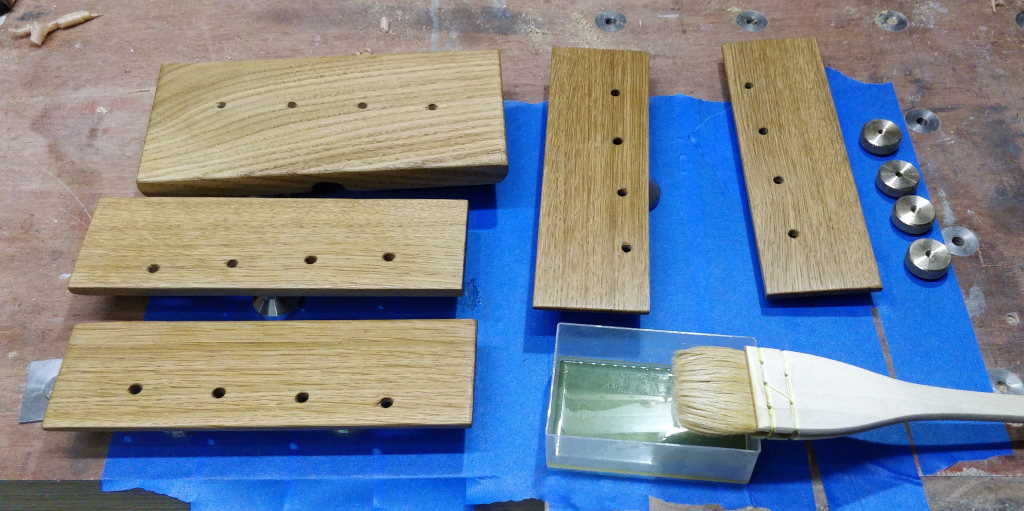
Finish is four coats of Shellac and one coat of paste wax. This was the first time I'd used Shellac. It isn't as nice to apply and doesn't look quite as good as the Tung Oil/White Spirit/Varnish mix I've used in the past, but I do like the fact the coats dry so quickly so I don't have to spend several days applying finish.
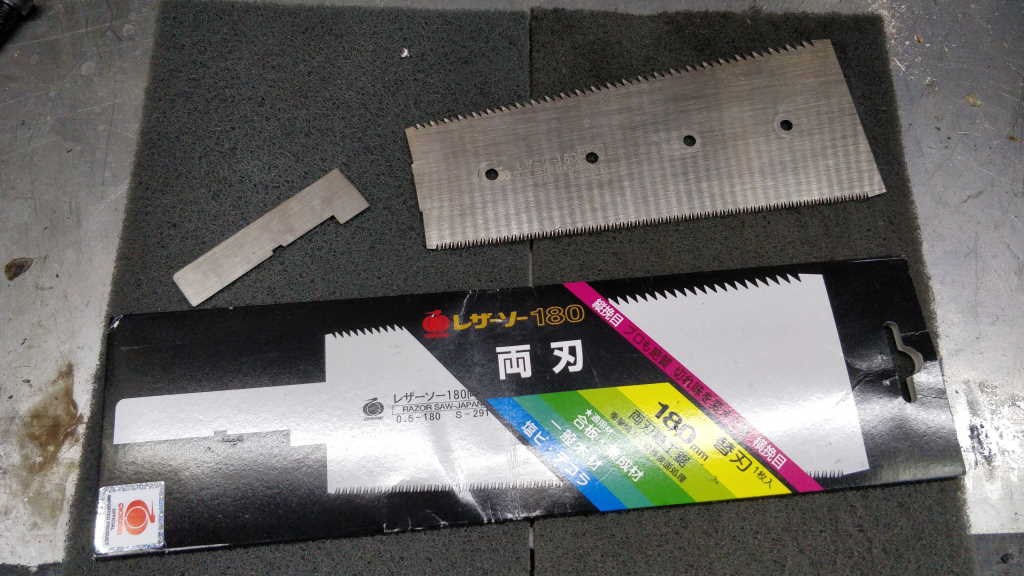
It all started with this saw blade, which I spotted on ebay for £10 (someone had bought the wrong blade for their saw). I don't have the saw but I saw a potential use.
I snapped off the tang and drilled four holes in it - I was a bit worried about how easy it would be to drill, but it was quite straightforward.
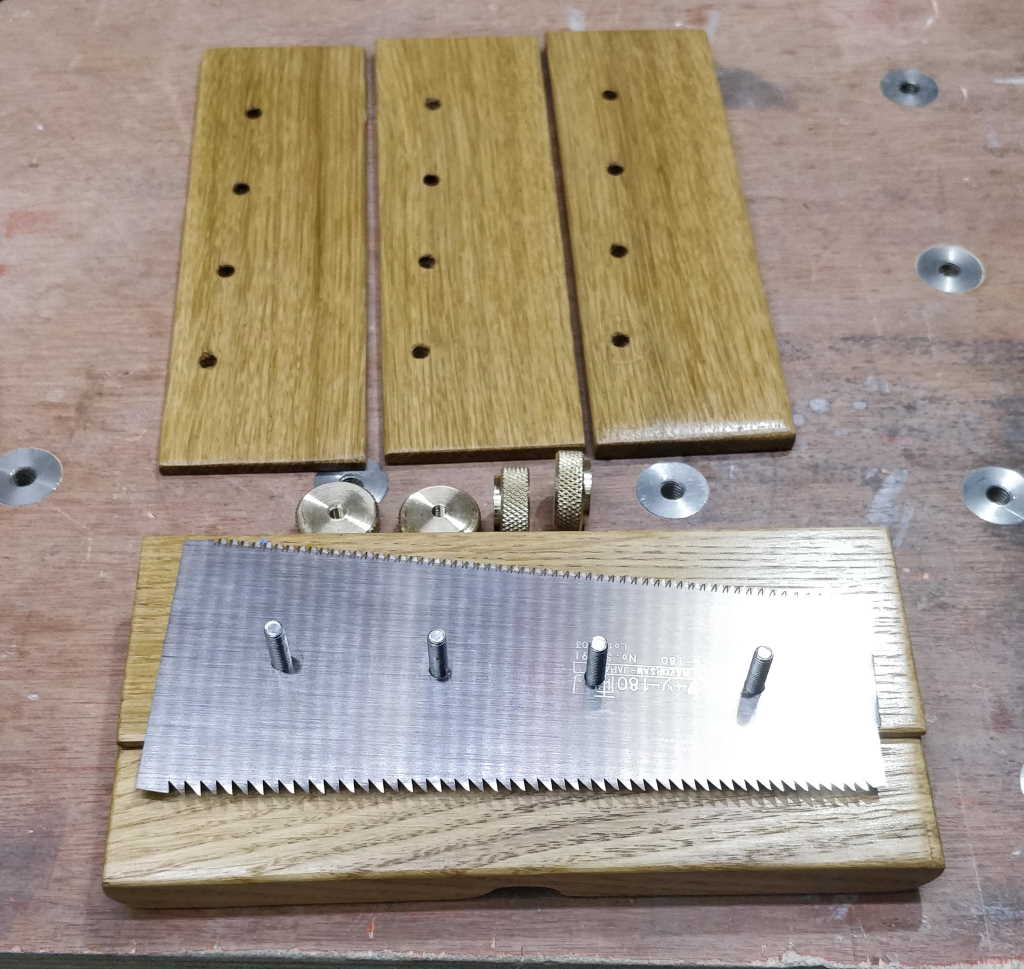
This photo shows what it looks like inside the saw.
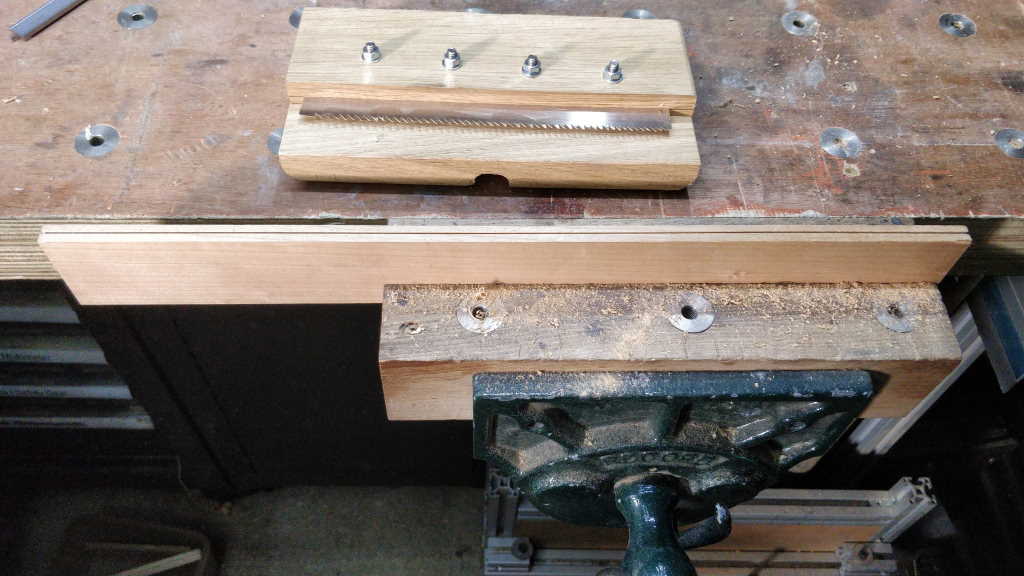
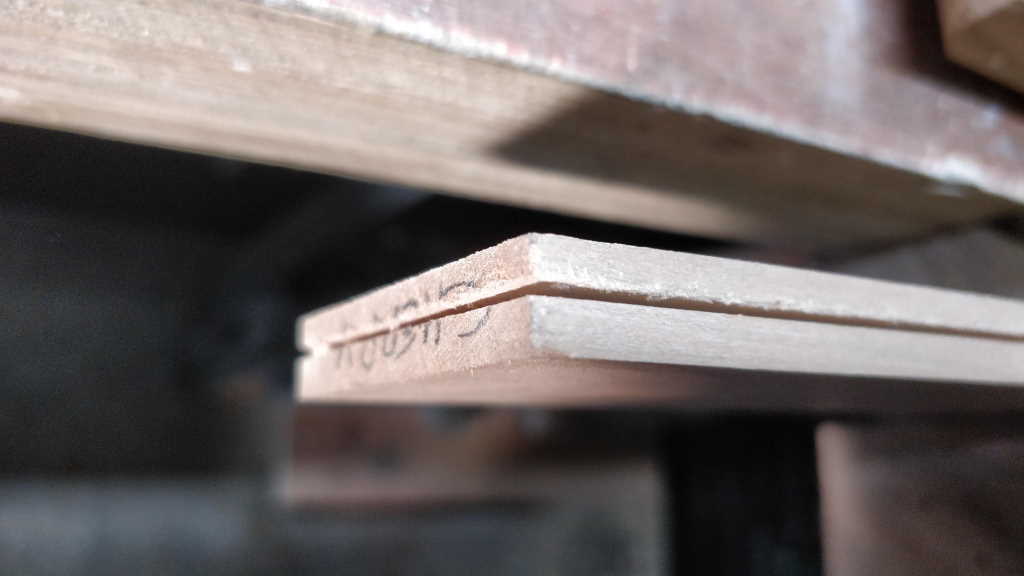
This photo shows what the result looks like with a 9 mm thick bit of cherry and the 4 mm spacer (this was done as a test before I applied the finish or made the knurled brass knobs - hence the nuts and washers).

The saw then follows the cut very easily.
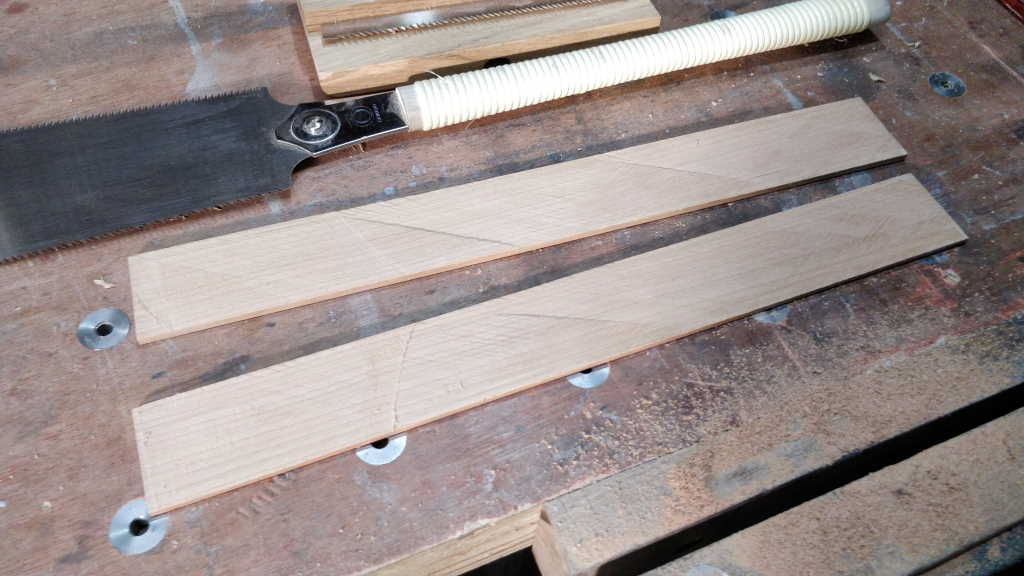
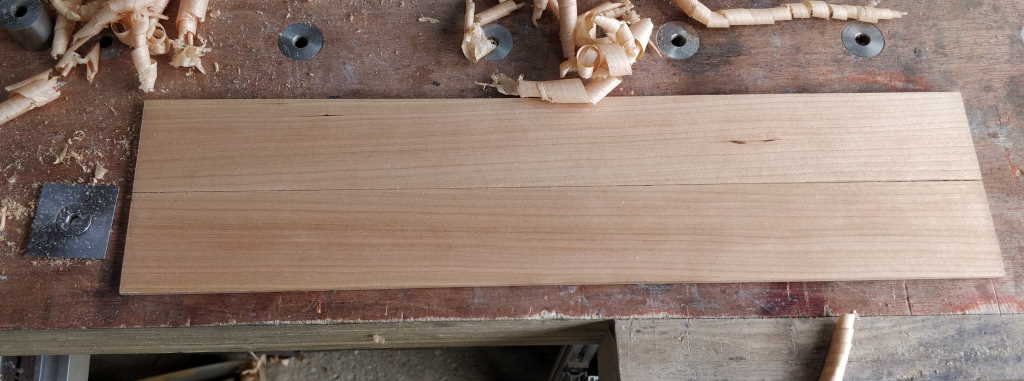
These photos show what the cherry looked like after cutting (left) and after planing to 3 mm (right).
I think this saw is going to get a lot of use, which is really satisfying, especially since I started and finished making it (including the knurled knobs and all four coats of Shellac) all in one day.
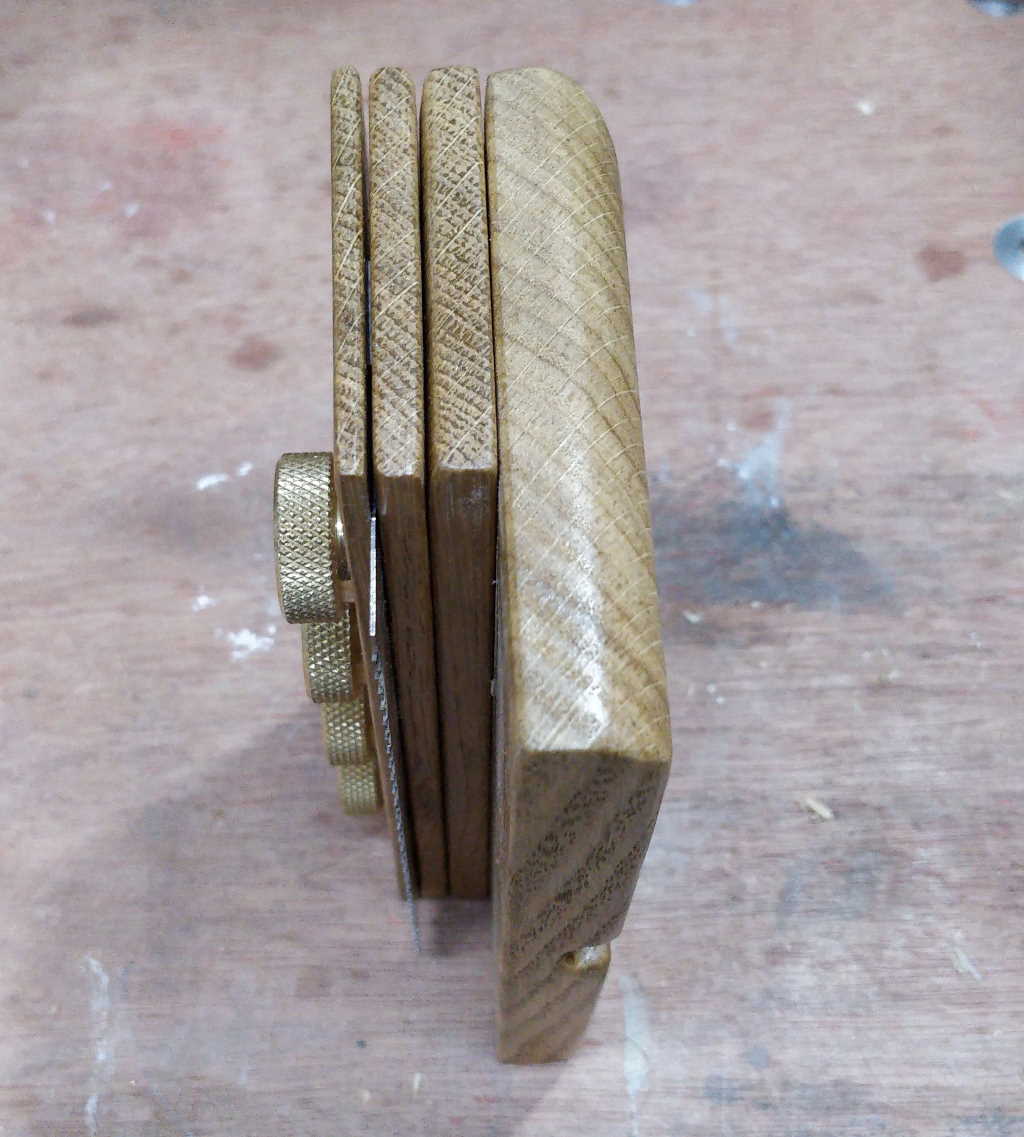
By combining multiple spacers, the kerfing saw can cut its mark up to 15 mm from the fence. The photo above shows it configured for a 15 mm cut.
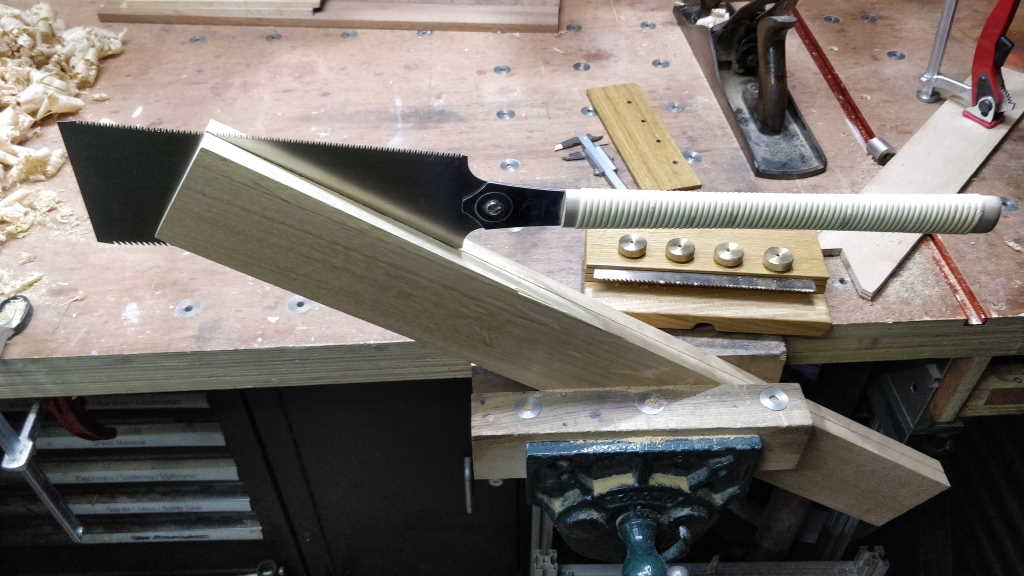
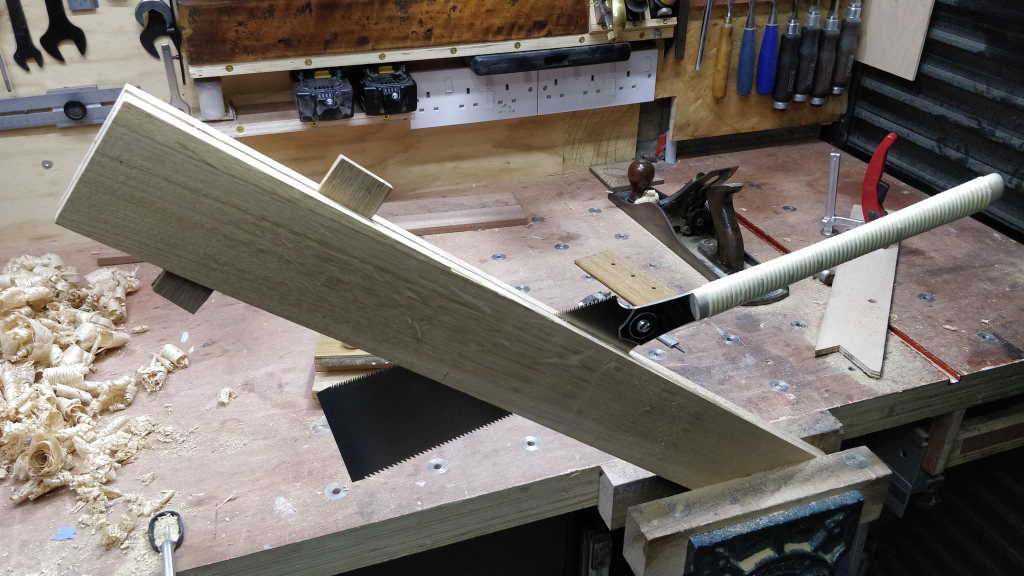
These two photos show the saw following the kerf after marking it out with the kerfing saw set to 15 mm. The wedges you can see in the right-hand photo were offcuts from trimming the legs on my side table and are being used to stop the kerf from closing up due to released strain in the wood.
This website is free and ad-free, but costs me money to run. If you'd like to support this site, please consider making a small donation or sending me a message to let me know what you liked or found useful.
